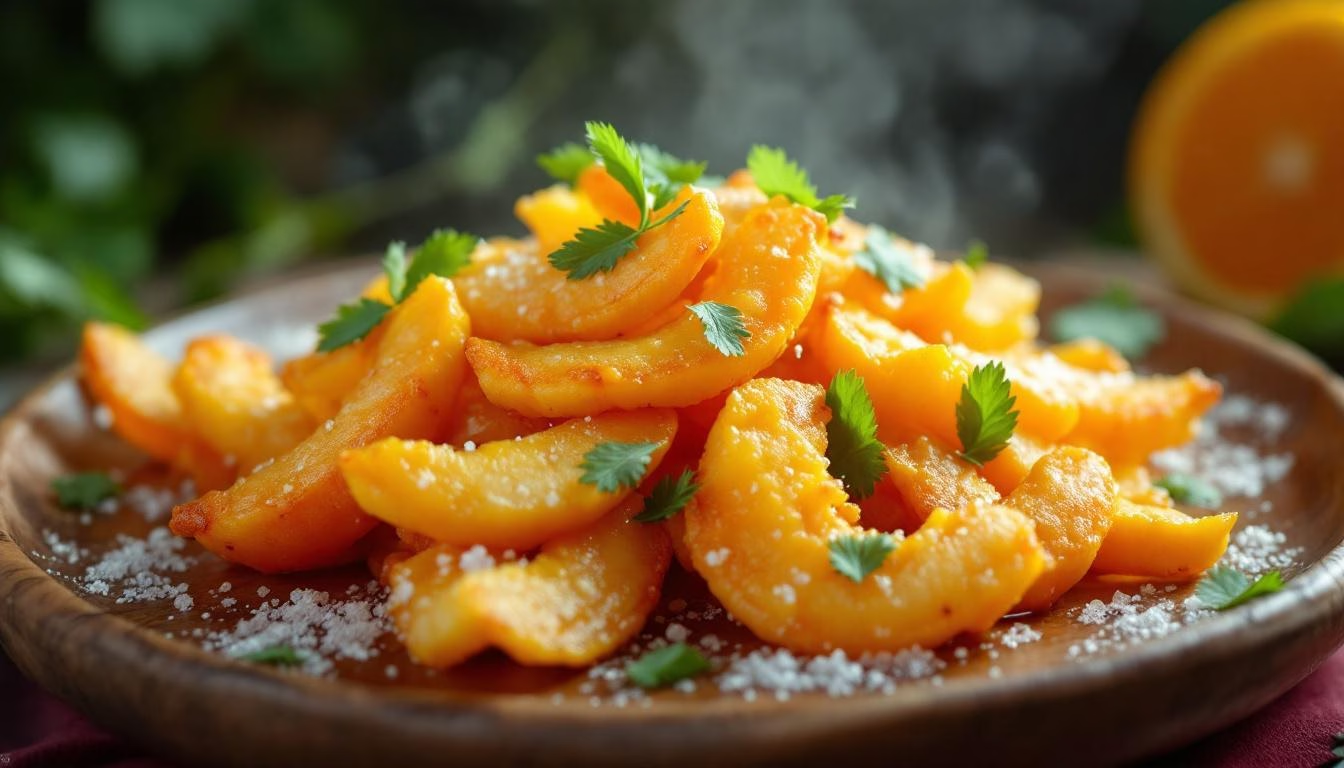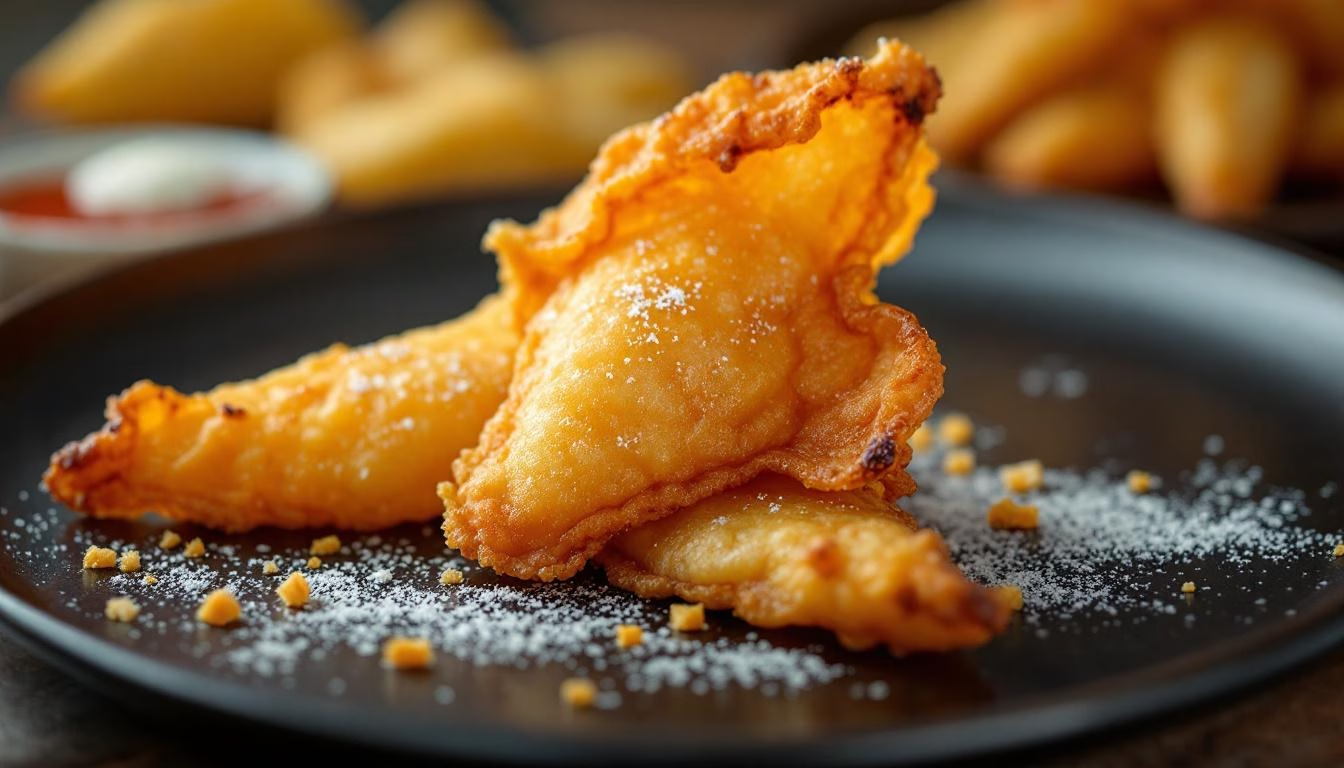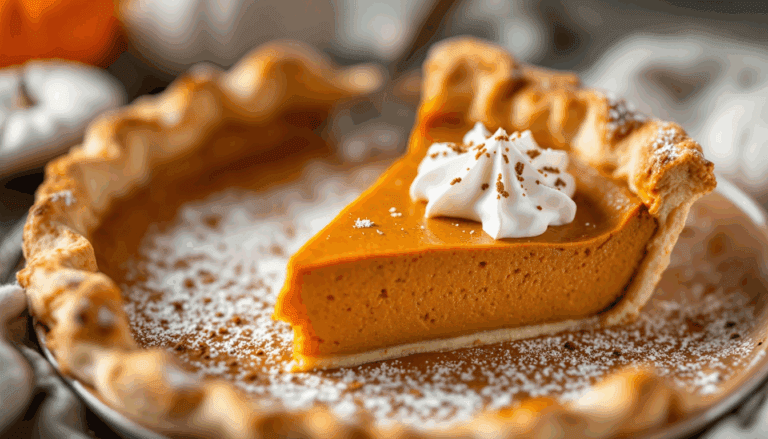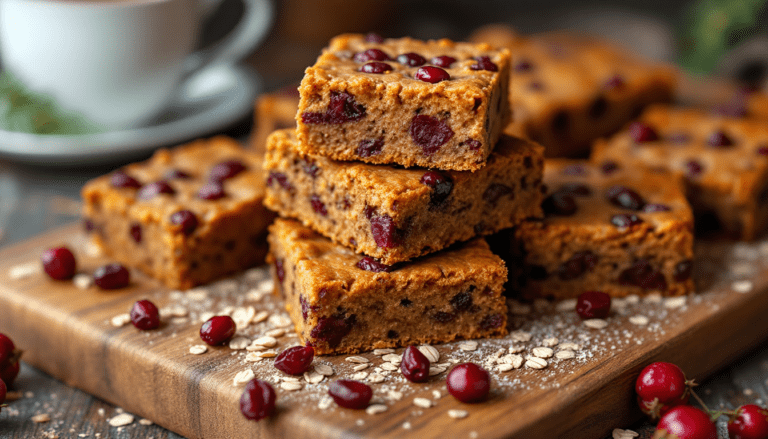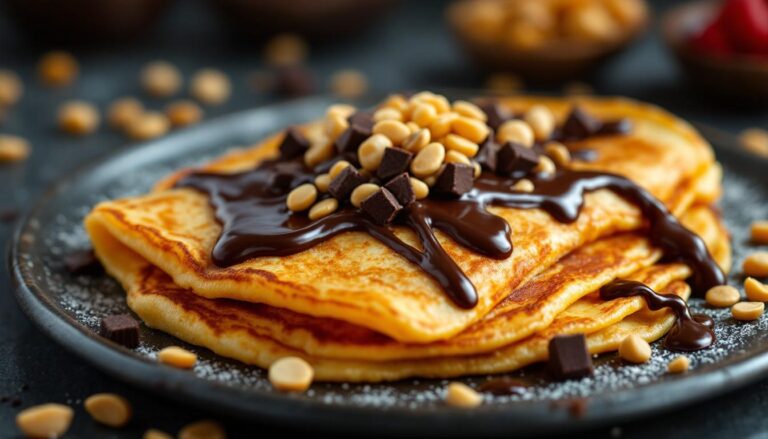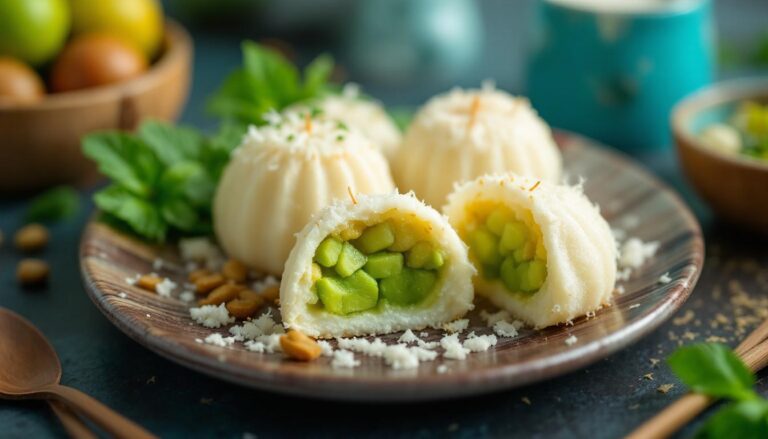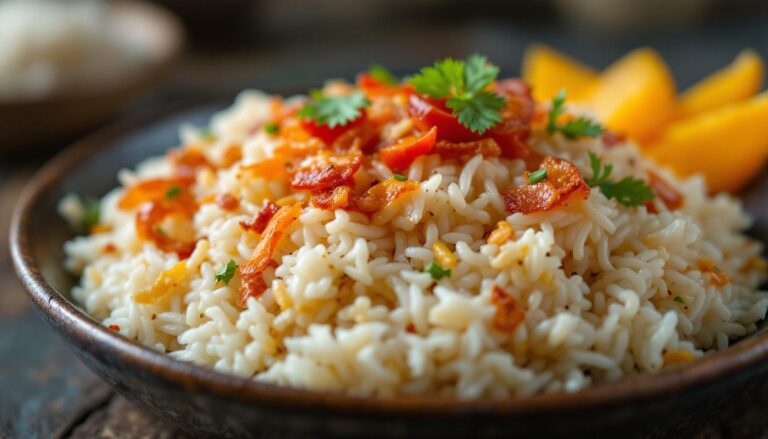Perfect Pisang Goreng Recipe – Crispy Indonesian Fried Bananas
The Perfect Crispy Pisang Goreng Recipe: Indonesian Fried Bananas That’ll Change Your Snack Game – Let me tell you about the day I first discovered pisang goreng at a tiny Indonesian street cart tucked between a laundromat and a cell phone repair shop in Queens.
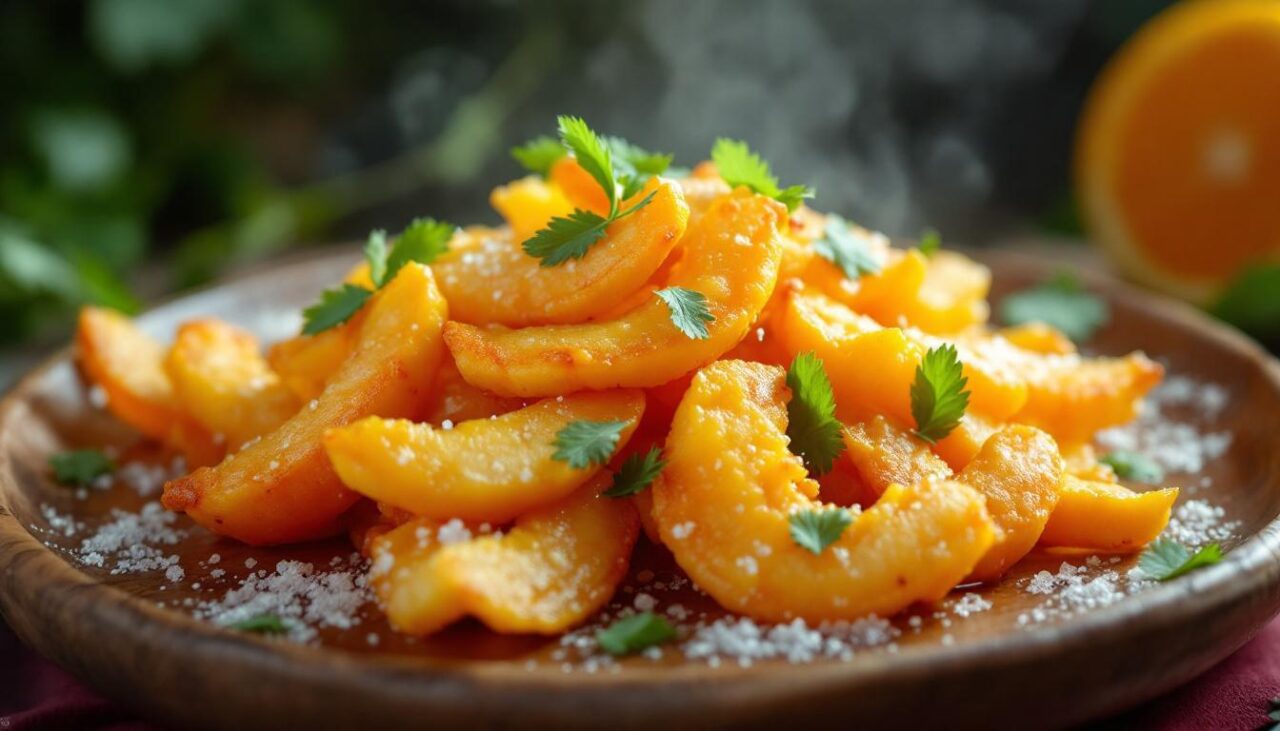
Pisang Goreng Recipe
Ingredients
- ½ cup white rice flour
- ⅓ cup tapioca starch
- ½ teaspoon baking powder
- 3 teaspoons palm sugar (coconut sugar, or brown sugar)
- ¼ teaspoon salt
- ⅔ cup ice-cold water
- Cooking oil for frying
- 4 bananas (medium size, semi-ripe)
Instructions
- In a mixing bowl, combine rice flour, tapioca starch, baking powder, palm sugar (or coconut sugar, or brown sugar), and salt, and mix until well incorporated.
- Slowly pour the ice-cold water into the dry mixture, stirring thoroughly until the batter is smooth.
- In a frying pan or Dutch oven, heat cooking oil over medium heat to a depth of two inches (5cm) for frying.
- While the oil heats, peel medium-ripe bananas and slice into large bite-size pieces.
- Dip each banana slice into the batter, ensuring an even coating.
- Once the oil is 350-355°F (177-179°C), carefully place the battered banana slices into the hot oil one at a time, without overcrowding the pan.
- Fry the banana slices until golden brown, about 3-4 minutes.
- When crispy and golden brown, remove the pisang goreng with a slotted spoon and place on a wire rack to drain excess oil.
Nutrition
I was wandering around, stomach growling, wallet light, and frankly feeling a bit sorry for myself after a particularly brutal day at work.
The vendor, an elderly Indonesian woman with the kindest eyes, noticed my hesitation as I stared at her handwritten menu board covered in dishes I couldn’t pronounce.
“You try,” she said with a gentle smile, pointing to what looked like golden, crispy oblongs bobbing in hot oil.
“Pisang goreng.
You like.”
She wasn’t asking – she was stating a fact, and boy, was she right.
That first bite was a revelation: an impossibly crisp, almost shatteringly crunchy exterior giving way to the most tender, creamy banana interior I’d ever experienced.
The batter was light but substantial, sweet but not cloying, with this incredible textural contrast that made me understand why people line up for street food.
I stood there, probably looking ridiculous, making little happy noises while demolishing what turned out to be my dinner, lunch for the next day, and quite possibly my new obsession.
That was three years ago, and I’ve been chasing that perfect pisang goreng recipe ever since.
I’ve tried dozens of variations, failed spectacularly more times than I care to admit (let’s just say my smoke detector and I became very well acquainted), and slowly, methodically figured out what makes these Indonesian fried bananas so absolutely magical.
The secret, I’ve learned, isn’t just in the batter – though that rice flour and tapioca combination is crucial – it’s in understanding that this pisang goreng recipe is all about balance, timing, and respecting the banana.
The Ultimate Pisang Goreng Recipe for Crispy Fried Banana Perfection
Pisang goreng, which literally translates to “fried banana” in Indonesian, is so much more than its simple name suggests.
This beloved Indonesian snack represents the beautiful intersection of technique and ingredient quality that defines the best street food around the world.
Unlike the heavy, cake-like banana fritters you might find elsewhere, authentic pisang goreng achieves something almost architectural – a delicate, crispy shell that shatters between your teeth to reveal perfectly tender banana inside.
The magic lies in the batter composition and the choice of bananas.
Traditional pisang goreng uses a combination of rice flour and tapioca starch, which creates a completely different texture than regular wheat flour.
Rice flour gives you that distinctive crunch, while tapioca starch adds a subtle chewiness and helps the coating stay crispy longer.
The bananas need to be just right too – not too ripe (they’ll fall apart) and not too green (they’ll be starchy and bland).
You want that sweet spot where they’re fragrant and yielding but still hold their shape when fried.
What I love most about this pisang goreng recipe is how it transforms something as humble as a banana into pure comfort food magic.
In Indonesia, pisang goreng is the ultimate afternoon snack, sold from pushcarts and warungs (small local restaurants) throughout the day.
- Easy Banana Pancakes Recipe – Simple & Delicious
- The Ultimate Chocolate Gateau Recipe: Simpler Than You Think
- Roti Kukus Recipe: Indonesian Sweet Steamed Bread
- Salted Caramel Cheescake Recipe
- Bread and Butter Pudding Recipe: Comfort in Every Bite
- The Best Sticky Toffee Pudding Recipe That’ll Make You Lick The Plate
It’s the kind of food that brings people together – cheap, satisfying, and utterly irresistible when done right.
The Complete Pisang Goreng Recipe
This pisang goreng recipe has been tested, retested, and perfected through countless batches (and a few kitchen mishaps that shall remain nameless).
The key is getting your batter consistency just right and maintaining the proper oil temperature – two things that sound simple but make all the difference between crispy perfection and soggy disappointment.
Ingredients of Crispy Pisang Goreng Recipe You’ll Need
Here’s the inngreedients:
For the Batter:
- ½ cup white rice flour
- ⅓ cup tapioca starch
- ½ teaspoon baking powder
- 3 teaspoons palm sugar (coconut sugar or brown sugar work too)
- ¼ teaspoon salt
- ⅔ cup ice-cold water
For Frying:
- Cooking oil for deep frying (about 4-6 cups depending on your pan)
- 4 medium bananas, semi-ripe
Step-by-Step Instructions
Making perfect pisang goreng is all about timing and technique, but don’t let that scare you – once you get the hang of it, this recipe becomes second nature.
Preparing the Batter
Start by combining all your dry ingredients in a mixing bowl.
I like to whisk the rice flour, tapioca starch, baking powder, palm sugar, and salt together thoroughly – this ensures even distribution and prevents any lumps from forming later.
The palm sugar adds a subtle caramel note that complements the bananas beautifully, but if you can’t find it, coconut sugar or even brown sugar work perfectly well.
Now comes the crucial part: adding the ice-cold water.
And I mean ice-cold – this isn’t just a suggestion.
Cold water helps create a lighter, crispier batter by slowing down gluten development and creating better texture.
Pour the water in slowly while stirring constantly.
You want a batter that’s smooth but not too thick – think of the consistency of heavy cream or a thin pancake batter.
If it’s too thick, add a tablespoon of water at a time until you get the right consistency.
Getting the Oil Ready
While your batter rests (and yes, letting it sit for 5-10 minutes helps), heat your oil in a heavy-bottomed pan or Dutch oven.
You need about 2 inches of oil for proper deep frying.
I can’t stress enough how important temperature control is for this pisang goreng recipe – too hot and your coating burns before the banana cooks through, too cool and you get greasy, soggy results.
The ideal temperature is 350-355°F (177-179°C).
If you don’t have a thermometer, test with a drop of batter – it should sizzle immediately and float to the surface.
If it sinks and takes a while to bubble up, your oil isn’t hot enough.
If it browns instantly, turn down the heat and wait a few minutes.
Preparing and Frying the Bananas
Choose your bananas carefully – they should be yellow with maybe a few small brown spots, but still firm to the touch.
Peel them and slice into large, bite-sized pieces, about 2-3 inches long.
Don’t make them too small or they’ll overcook, and don’t make them too large or the outside will burn before the inside heats through.
Dip each banana piece into the batter, making sure it’s completely coated but not drowning.
Let any excess batter drip off – you want a thin, even coating that will crisp up beautifully.
Carefully lower the battered banana into the hot oil, working in small batches to avoid overcrowding.
Overcrowding drops the oil temperature and leads to uneven cooking.
Fry for 3-4 minutes, turning once if needed, until the pisang goreng is golden brown and crispy all over.
The color should be a beautiful, even golden brown – not pale (undercooked) and not dark brown (overcooked).
Remove with a slotted spoon and immediately place on a wire rack to drain.
This is important – paper towels will make the bottom soggy, while a wire rack lets air circulate and keeps everything crispy.
Pro Tips and Troubleshooting
After making this pisang goreng recipe more times than I can count, I’ve learned a few tricks that make all the difference between good and absolutely spectacular results.
Temperature Control is Everything
The biggest mistake I see people make is not paying attention to oil temperature.
Too many home cooks think “hot oil is hot oil,” but that extra 25-50 degrees makes a huge difference.
Invest in a good thermometer – it’s worth it.
If your oil gets too hot during frying, don’t just turn down the heat; actually remove the pan from the burner for a minute to let it cool down.
Batter Consistency Matters
Your batter should coat the banana nicely but not be so thick that it creates a heavy shell.
If you can’t see the banana shape through the batter, it’s too thick.
Add water a tablespoon at a time.
If it’s too thin and won’t stick, whisk in a little more rice flour.
Banana Selection Strategy
I’ve learned the hard way that banana ripeness can make or break this recipe.
Overripe bananas will literally fall apart in the hot oil, creating a mess and wasting ingredients.
Underripe bananas stay too firm and don’t develop that creamy interior texture.
Look for bananas that give slightly when pressed but don’t have soft spots.
Timing Your Batches
Don’t try to fry everything at once, even if you’re feeding a crowd.
Work in small batches and keep finished pisang goreng warm in a 200°F oven while you finish the rest.
They’re best served immediately, but this method keeps them crispy for about 30 minutes.
Oil Recovery and Reuse
The oil from this pisang goreng recipe can be strained and reused for other frying projects.
Let it cool completely, strain through a fine-mesh sieve or coffee filter, and store in a cool, dark place.
It’ll keep for several weeks and actually develops better flavor after the first use.
Creative Variations to Try
Once you’ve mastered the basic pisang goreng recipe, there are so many fun directions you can take it.
These variations have become regular features in my kitchen, especially when I want to impress guests or just shake things up.
Coconut-Crusted Version
Add ¼ cup of unsweetened shredded coconut to your dry ingredients for extra texture and tropical flavor.
The coconut toasts beautifully in the hot oil and adds this amazing nutty crunch that pairs perfectly with banana.
Spiced Pisang Goreng
Stir a pinch of ground cinnamon, cardamom, or even a tiny amount of white pepper into your batter.
These warm spices complement the banana’s natural sweetness without overwhelming it.
Start with just a pinch – you can always add more next time.
Sesame Seed Addition
Sprinkle sesame seeds into the batter or roll the battered bananas in sesame seeds before frying.
This adds incredible nutty flavor and an extra layer of crunch that’s absolutely addictive.
Sweet and Salty Twist
Increase the salt slightly and serve your pisang goreng with a drizzle of honey or palm sugar syrup.
The sweet-salty combination is incredible and very traditional in Indonesian cuisine.
What to Expect: Realistic Results and Serving Suggestions
Let’s be honest about what you’re getting into with this pisang goreng recipe.
Your first batch might not look like the perfect golden specimens you see in photos, and that’s completely normal.
Mine certainly didn’t – I think my first attempt looked more like abstract art than food.
But even imperfect pisang goreng tastes amazing, and each batch teaches you something new about oil temperature, timing, and technique.
When you get it right, though – and you will – you’ll have crispy, golden pieces with that satisfying crunch that gives way to perfectly tender, almost custardy banana inside.
The flavor is subtle but complex: sweet from the banana and palm sugar, with that distinctive rice flour crispiness that’s completely different from wheat-based batters.
They’re best eaten immediately while still warm, when the contrast between the crispy exterior and creamy interior is most pronounced.
Serve your pisang goreng as an afternoon snack with Indonesian coffee or tea, or present them as a casual dessert after a spicy meal – they’re perfect for cooling down your palate.
In Indonesia, they’re often enjoyed with a cup of sweet iced tea or fresh coconut water.
I like to make a big batch when friends come over; they disappear faster than you’d believe, and everyone always asks for the recipe.
Don’t expect them to stay crispy for hours – like most fried foods, pisang goreng is best enjoyed fresh.
But honestly, in my experience, they never last long enough for that to be a problem.
This recipe yields 6 generous servings, but I’ve seen four people polish off an entire batch in about ten minutes, so plan accordingly.
And don’t be surprised if you find yourself making this pisang goreng recipe again within the week – it’s that kind of addictive comfort food that becomes a regular craving once you’ve mastered it.

